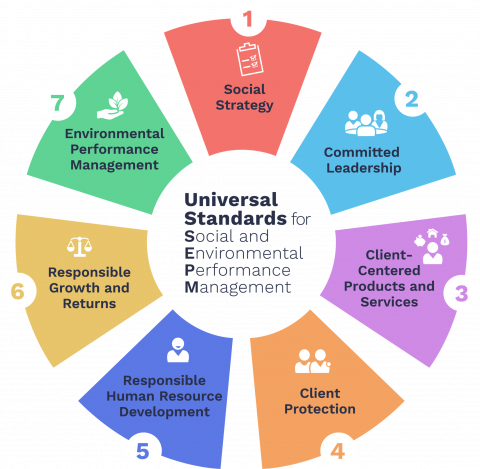
From intention to assessment: the new roadmap of impact investors

© Olivier Minaire
A panel discussion on Thursday 6 October at Banque de Luxembourg focused on impact assessment and transparency in the investment sector.
From intention to assessment: the new roadmap of impact investors
Transparency requirements for the financial sector are becoming ever more stringent. As reflected in the recent introduction of the EU Taxonomy, requiring financial and non-financial entities to publish non-financial reporting distinguishing between sustainable and non-sustainable investments with a view to achieving carbon neutrality by 2050.
It is true that the value of an investment no longer hinges purely on how much it yields. Investors are increasingly seeking to make a positive environmental and social impact on society and the population in general. But doing so calls for resources, methodologies and tools to measure the real impact of investments, rather than merely having the intention of generating an impact.
Investments today have become so diversified that no clear indicators exist for each sector, even though they are vital for guaranteeing customers a clear and transparent vision of their investments. In another key development, a full 50% of inclusive finance investment funds are now domiciled in Luxembourg.
But while much work still needs to be done, the process is in place, as the speakers at the 6 October “Midi de la Microfinance” panel discussion explained. The panel, moderated by Perrine Pouget, Head of Social Responsibility at the European Investment Bank, featured Safeya Zeitoun, Co-Manager and Head of Impact Solutions at the Swiss organisation Tameo Impact Fund Solutions; Jurgen Hammer, Head of the European Centre of the Social Performance Task Force, which promotes best social and environmental practices in the inclusive finance sector; and Mathilde Bauwin, Head of Knowledge Management at ADA, a Luxembourg-based NGO.
Impact assessment applied to inclusive finance
Inclusive finance emerged in the 1970s with the two-fold promise of financial profitability and improved living conditions for customers. It was the first financial sector to establish best practices and common standards for all participants, with the aim of measuring the positive impact of investments, particularly of social or environmental impacts. These standards were developed by the Social Performance Task Force (SPTF), which was created in 2005 and has been benefiting from the support of the Luxembourgish government for their implementation since 2019. “Harmonising means being transparent,” says Jurgen Hammer, adding that “it is no mean feat for an entire sector to have agreed on how to define and assess social and environmental performance based on common standards.”.

(source : Cerise et SPTF)
Impact investment is trending towards greater standardisation
Requirements have become stronger since the SPTF’s initial work on managing social performance. Safeya Zeitoun, Co-Manager of Tameo Impact Fund Solutions, shared her vision of the impact investment sector: “We carried out a survey with 190 impact funds in the private sector using different instruments. The results showed that the trend was towards standardisation. Microfinance investors are generally advanced in their ESG and impact management processes. Over 90% take ESG and impact considerations into account in both their due diligence and investment decision-making processes, and monitor and report on their impact performance at least once a year.” The survey served to pinpoint the processes and standards used by investors today. It also revealed a few key trends in impact investment themes, includingclimate, agriculture and inclusive finance.
And as stressed by Mathilde Bauwan from ADA: “Measurement and verification processes are changing to respond to the initial intentions of investors looking to invest in businesses supposed to have a positive impact.”
The challenge of standardising impact indicators
Impact assessment processes may be trending in the right direction, but the lack of standardisation remains a challenge. “We have to ask ourselves how we can standardise in a sector of extremely varied instruments and themes. Is standardising indicators even feasible?” Safreya asked. “Everyone has challenges at their level.”
Support for maximising impact: the added value of development organisations such as ADA
The Luxembourgish NGO ADA supports impact investors with the shared goal of demonstrating that inclusive finance has a positive impact. ADA assists inclusive finance actors, not simply by measuring impact but by making sure that the results have a real effect on the lives of inclusive finance customers beyond mere reporting. “It’s a delicate process to implement, requiring support on the ground,” said Mathilde Bauwin.
“Other players, such as governments, development banks, financial institutions and NGOs specialised in development, also provide this support work,” added Jurgen Hammer from the SPTF. A number of concrete initiatives effectively demonstrate the action taken by governments. “For three years now, we have provided three regional facilities as part of the Responsible Inclusive Finance Facility (RIFF) aimed at strengthening practices in the management of social performance, including customer protection practices,” he said. “These facilities are financed by the Agence Française de Développement, the Swiss Agency for Cooperation and Development, the Luxembourgish government, and the European Investment Bank.”
Impact investors can rest assured, because while the road to standardisation remains long, everything is being done to head in the right direction.